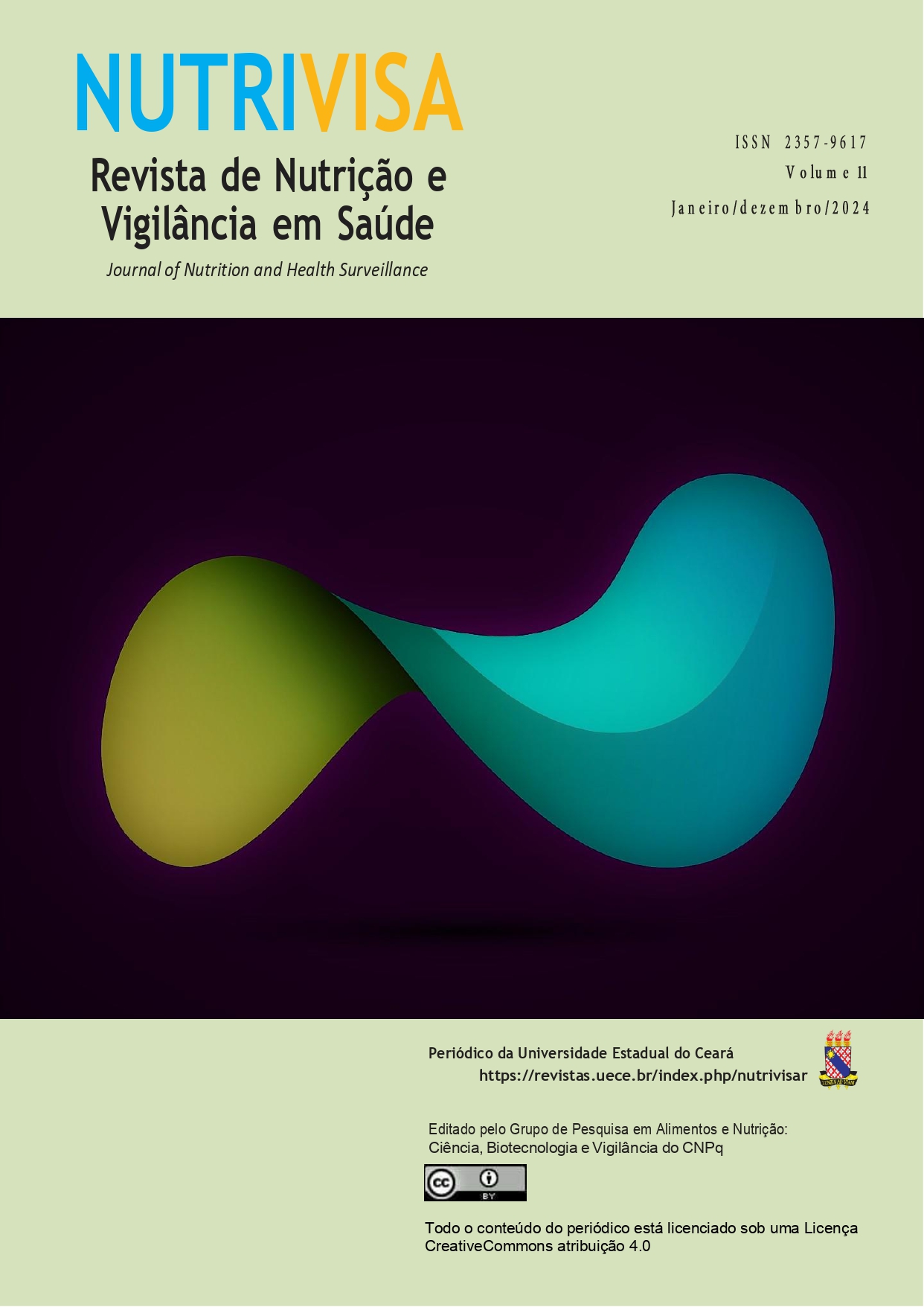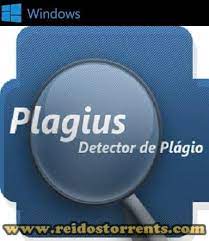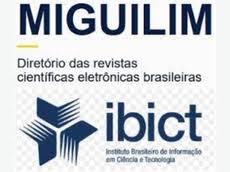Rutina reduz perda de tecido adiposo induzida pela doxorrubicina e melhora atividade antioxidante
DOI:
https://doi.org/10.59171/nutrivisa-2024v11e12545Palavras-chave:
Doxorrubicina. Tecido adiposo. Rutina. Desequilibrio redox.Resumo
A doxorrubicina (DX) é uma droga quimioterápica que é amplamente utilizada por pacientes neoplásicos, entretanto promove efeitos colaterais deletérios em tecidos não tumorais, como o tecido adiposo. O mecanismo de ação da DX tem sido associado a uma maior produção de espécies reativas de oxigênio, e terapias com componentes antioxidantes, como a rutina, podem ser benéficas na redução dos efeitos adversos dessa droga. O objetivo desse trabalho foi verificar o efeito da rutina na adiposidade e homeostase redox do tecido adiposo de camundongos tratados com doxorrubicina. Camundongos Swiss machos foram divididos em três grupos: o controle grupo (CT); o grupo doxorrubicina (DX), no qual os camundongos receberam cloridrato de DX na dose de 2,5 mg / kg peso corporal intraperitoneal duas vezes por semana durante 2 semanas, e grupo RT (DX + rutina), no qual camundongos além de receberem a DX i.p., receberam a rutina diariamente por via oral na dose de 10 mg / kg de peso. Ingestão de alimentos e peso corporal foram avaliados semanalmente e os camundongos foram eutanasiados e coletado os coxins do tecido adiposo (subcutâneo, periepididimal e retroperitoneal), pesados e armazenados a −80◦C. Foram avaliados dano oxidativo e atividade da enzima antioxidante catalase. A rutina atenuou a perda de tecido adiposo causada pela DX, e aumentou a atividade da catalase. Esses resultados demonstram a importância de novos estudos para esclarecer o papel da rutina na redução dos efeitos colaterais relacionados à quimioterapia em órgãos relevantes para o controle da homeostase.
Referências
AKOLKAR, G.; DIAS, D. S.; AYYAPPAN, P.; BAGCHI, A. K.; JASSAL, D. S.; CURY, V. M.; IRIGOYEN, M. C.; DE ANGELIS, K.; SINGAL, P. K. Vitamin C mitigates oxidative/nitrosative stress and inflammation in doxorubicin-induced cardiomyopathy. Am J Physiol Heart Circ Physiol, 1;313(4):H795-H809, 2017. doi: 10.1152/ajpheart.00253.2017.
ALBINI, A.; PENNESI, G.; DONATELLI, F.; CAMMAROTA, R.; DE FLORA, S.; NOONAN, D. M. Cardiotoxicity of anticancer drugs: the need for cardio-oncology and cardio-oncological prevention. J Natl Cancer Inst 102: 14 –25, 2010. doi: 10.1093/jnci/djp440.
AYLA, S.; SECKIN, I.; TANRIVERDI, G.; CENGIZ, M.; ESER, M.; SONER, B. C.; OKTEM, G. Doxorubicin induced nephrotoxicity: protective effect of nicotinamide. Int J Cell Biol, 390238, 2011. doi: 10.1155/2011/390238.
BARBOSA, K. B. F.; COSTA, N. M. B.; ALFENAS, R. D. C. G.; DE PAULA, S. O.;
MINIM, V. P. R.; BRESSAN, J. Oxidative stress: concept, implications and modulating factors. Revista de Nutrição, v. 23, n. 4, p. 629-643, 2010. https://doi.org/10.1590/S1415-52732010000400013.
BING C. Lipid mobilization in cachexia: mechanisms and mediators. Curr Opin Support Palliat Care. 5(4):356-60, 2011. doi: 10.1097/SPC.0b013e32834bde0e.
BIONDO, L.A.; BATATINHA, H.A.; SOUZA, C.O.; TEIXEIRA, A.A.S.; SILVEIRA, L.S.; ALONSO-VALE, M.I.; OYAMA, L.M.; ALVES, M.J.; SEELAENDER, M.; NETO, J.C.R. Metformin Mitigates Fibrosis and Glucose Intolerance Induced by Doxorubicin in Subcutaneous Adipose Tissue. Front Pharmacol. 2018. doi:10.3389/fphar.2018.00452.
BIONDO, L.A.; LIMA JUNIOR, E. A.; SOUZA, C. O.; CRUZ, M. M.; CUNHA, R. D.; ALONSO-VALE, M. I.; OYAMA, L. M.; NASCIMENTO, C. M.; PIMENTEL, G. D.; DOS SANTOS, R. V.; LIRA, F. S.; ROSA, T. O.; NETO, J. C. Impact of Doxorubicin Treatment on the Physiological Functions of White Adipose Tissue. PLoS One. 25;11(3):e0151548, Mar, 2015. https://doi.org/10.1371/journal.pone.0151548.
BRASIL. INCA – Instituto Nacional do Câncer [internet]. Rio de Janeiro: Quimioterapia; 2015 [cited 2019]. Avaliable from: http://www.inca.gov.br/conteudo_view.asp?ID=101.
CABEZA, L.; ORTIZ, R.; ARIAS, J. L.; PRADOS, J.; RUIZ MARTINEZ, M. A.; ENTRENA, J. M.; LUQUE, R.; MELGUIZO, C. Enhanced antitumor activity of doxorubicin in breast cancer through the use of poly(butylcyanoacrylate) nanoparticles. Int J Nanomedicine. 10:1291–306, 2015. doi: 10.2147/IJN.S74378.
CASTILHO, R. O.; KAPLAN, M. A. C. Phytochemical study and antimicrobial activity of Chrysobalanus icaco. Chemistry of Natural Compounds, v. 47, n. 3, p. 436, 2011. DOI:10.1007/s10600-011-9953-x.
GANESHPURKAR, A.; SALUJA A. K. The Pharmacological Potential of Rutin. Saudi Pharmaceutical Journal, 25(2):149-164, 2017. doi: 10.1016/j.jsps.2016.04.025.
GRADINARU, D.; MARGINA, D.; BORSA, C.; IONESCU, C.; ILIE, M.; COSTACHE, M.; DINISCHIOTU, A.; PRADA, G. I. Adiponectin: possible link between metabolic stress and oxidative stress in the elderly. Aging Clin Exp Res., v. 29, n. 4, p. 621-629, 2017. doi: 10.1007/s40520-016-0629-z.
GUPTA, V.K., SHARMA, B. Role of phytochemicals in neurotrophins mediated regulation of Alzheimer's disease. Int. J. Complement. Alt. Med., 7(4), 2017 https://doi.org/10.15406/ijcam.2017.07.00231. 00231.
HUBER, P. C.; ALMEIDA, W. P.; DE FÁTIMA, A. Glutathione and related enzymes: biological roles and importance in pathological processes. Química Nova, 31 (5) • 2008 • https://doi.org/10.1590/S0100-40422008000500046.
IARC – International Agency for Research on Cancer. GLOBOCAN, 2018. [cited 2019]. Avaliable from: https://www.iarc.fr/featured-news/latest-global-cancer-data-cancer-burden-rises-to-18-1-million-new-cases-and-9-6-million-cancer-deaths-in-2018.
JOKINEN, R.; PIRNES-KARHU, S.; PIETILÄINEN, K. H.; PIRINEN, E. Adipose tissue NAD+-homeostasis, sirtuins and poly (ADP-ribose) polymerases-important players in mitochondrial metabolism and metabolic health. Redox Biol.; n. 12, p. 246-263, 2017. doi: 10.1016/j.redox.2017.02.011.
LIPSHULTZ, S. E.; COCHRAN, T. R.; FRANCO, V. I.; MILLER, T. R. Treatment-related cardiotoxicity in survivors of childhood cancer. Nat Rev Clin Oncol. 10(12):697-710, 2013. doi: 10.1038/nrclinonc.2013.195.
LUDKE, A. R.; AL-SHUDIEFAT, A. S.; DHINGRA, S.; JASSAL, D. S.; SINGAL, P. K. A Concise description of cardioprotective strategies in Doxorubicin-Induced cardiotoxicity. Can J Physiol Pharmacol. 87: 756–63, 2009. doi: 10.1139/Y09-059.
LUDKE, A. R.; SHARMA, A. K.; AKOLKAR, G.; BAJPAI, G.; SINGAL, P. K. Downregulation of Vitamin C Transporter SVCT-2 in doxorubicin-Induced cardiomyocyte injury. Am J Physiol Cell Physiol. 303: C645– 653, 2012. doi: 10.1152/ajpcell.00186.2012.
MA, Y.; YANG, L.; MA, J.; LU, L.; WANG, X.; REN, J.; YANG, J. Rutin attenuates doxorubicin-induced cardiotoxicity via regulating autophagy and apoptosis. Biochim Biophys Acta Mol Basis Dis. Aug;1863(8):1904-1911, 2017. doi: 10.1016/j.bbadis.2016.12.021.
PANDEY, K. B., RIZVI, S. I. Plant polyphenols as dietary antioxidants in human health and disease. Oxid Med Cell Longev, 2(5):270-8, 2009. doi: 10.4161/oxim.2.5.9498.
PAULA, C. S.; CANTELI, V. C. D.; HIROTA, B. C. K.; CAMPOS, R.; OLIVEIRA, V. B.; KALEGARI, M.; SILVA, C. B.; SILVA, G. M.; MIGUEL, O. G.; MIGUEL, M. D. Potencial antioxidante in vitro das folhas da Bauhinia ungulata L. Revista de Ciências Farmacêuticas Básica e Aplicada, Araraquara, v. 35, n. 2, p. 217-222, 2014. ID: lil-757773.
PRESTA, G. A.; FONSECA, A. S.; BERNARDO-FILHO, M. A Chrysobalanus icaco extract alters the plasmid topology and the effects of stannous chloride on the DNA of plasmids. Revista Brasileira de Farmacognosia, v. 17, n. 3, p. 331-335, 2007. https://doi.org/10.1590/S0102-695X2007000300005.
PRESTA, G. A.; PEREIRA, N. A. Activity of abejeru (Chrysobanalus icaco lin chrysobalanacea) in experimental study of hypogycemiant plants. Revista Brasileira de Farmácia, Rio de janeiro, n. 68 p.91-101, out-dez, 1987.
RIVANKAR, S. An overview of doxorubicin formulations in cancer therapy. Journal of Cancer Research and Therapeutics, 10(4):853-858, 2014. doi: 10.4103/0973-1482.139267.
SANTOS, R.V.T.; BATISTA, M.L.; CAPERUTO, E.C.; ROSA L.F.B.P.C. Chronic supplementation of creatine and vitamins C and E increases survival and improves biochemical parameters after doxorubicin treatment in rats. Clinical and Experimental Pharmacology and Physiology, 34, 1294–1299, 2007. doi: 10.1111/j.1440-1681.2007.04717.x.
SHABALALA, S.; MULLER, C. J. F.; LOUW, J.; JOHNSON, R. Polyphenols, autophagy and doxorubicin-induced cardiotoxicity. Life Sci, 1:180:160-170, 2017. doi: 10.1016/j.lfs.2017.05.003.
TSOLI, M.; SCHWEIGER, M.; VANNIASINGHE, A. S.; PAINTER, A.; ZECHNER, R.; CLARKE, S.; ROBERTSON, G. Depletion of white adipose tissue in cancer cachexia syndrome is associated with inflammatory signaling and disrupted circadian regulation. PLoS One. 9(3):e92966, 2014. https://doi.org/10.1371/journal.pone.0092966.
WANG, L.; YANG, F.; ZHAO, X.; LI, Y. Effects of nitro- and amino-group on the antioxidant activity of genistein: A theoretical study. Food Chem, 1:275:339-345, 2018. doi: 10.1016/j.foodchem.2018.09.108.
XIANG, P.; DENG, H.Y.; LI, K.; HUANG, G.; CHEN, Y.; TU, L.; NG, P.C.; PONG, N.H.; ZHAO, H.; ZHANG, L.; SUNG, R.Y.T. Dexrazoxane protects against doxorubicin-induced cardiomyopathy: upregulation of Akt and Erk phosphorylation in a rat model. Cancer Chemother. Pharmacol. 63, 343–349, 2009. doi: 10.1007/s00280-008-0744-4.
ZHANG, J.; WANG, X.; VIKASH, V.; YE, Q.; WU, D.; LIU, Y.; DONG, W. ROS and ROSMediated Cellular Signaling. Oxid Med Cell Longev., n. 2016, 4350965, 2016. doi: 10.1155/2016/4350965.
Downloads
Publicado
Como Citar
Edição
Seção
Licença
Copyright (c) 2024 Paula Alexandre de Freitas, Danielle Carvalho Fonseca Falanga, Raquel Cristina de Sousa Lima Landim, Luís Sérgio Fonteles Duarte, Keciany Alves de Oliveira, Nilberto Robson Falcão do Nascimento, Ariclécio Cunha de Oliveira

Este trabalho está licenciado sob uma licença Creative Commons Attribution 4.0 International License.














